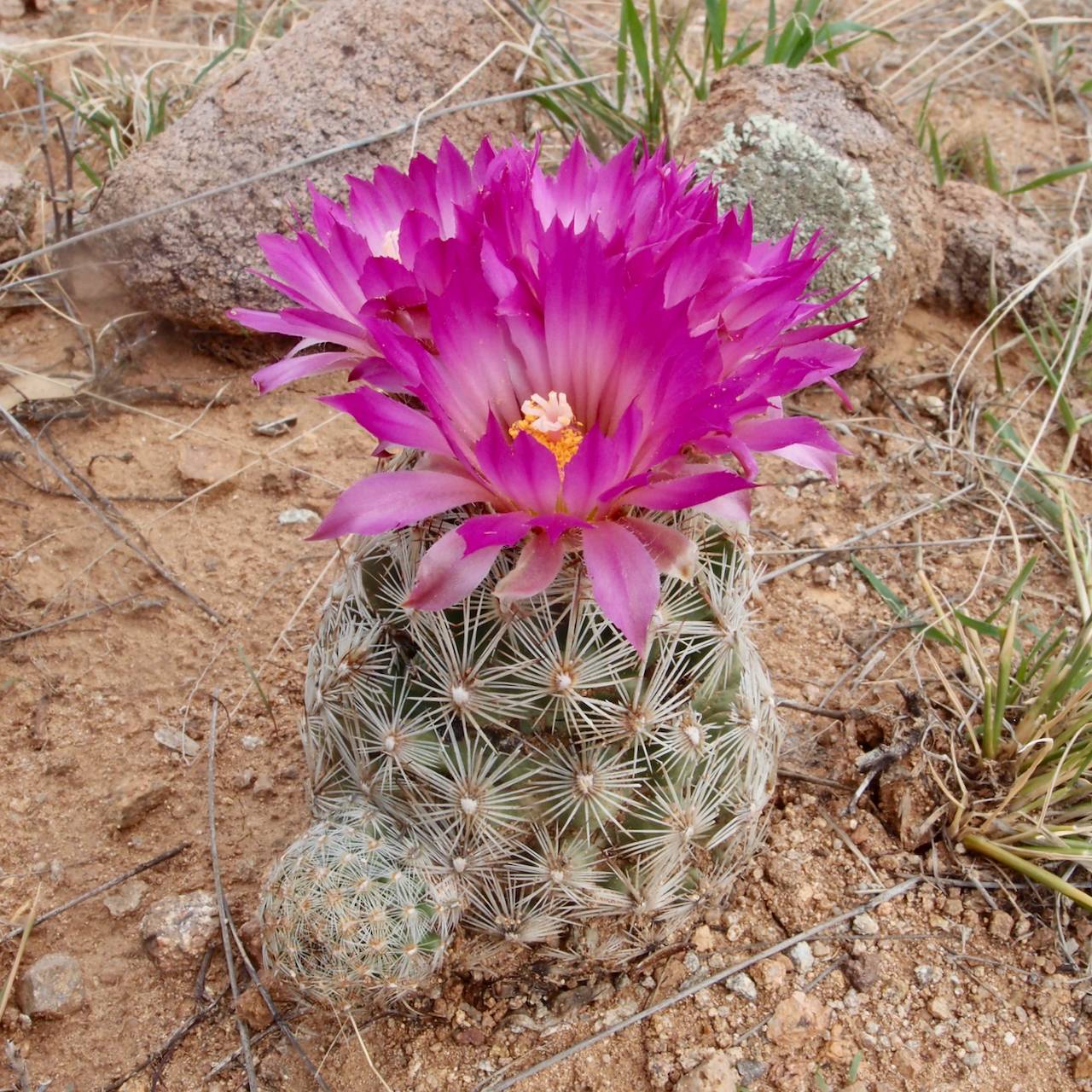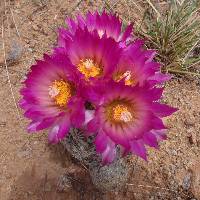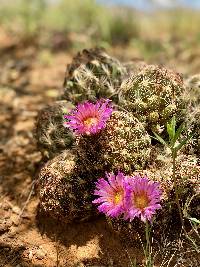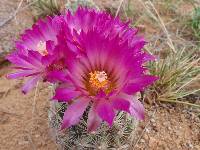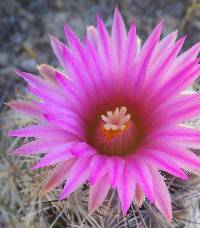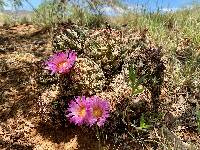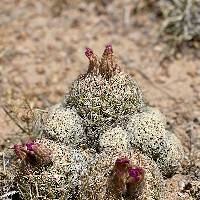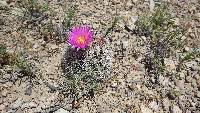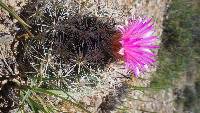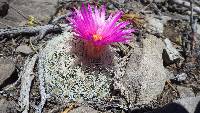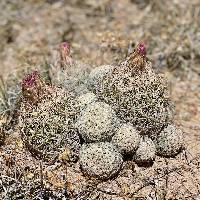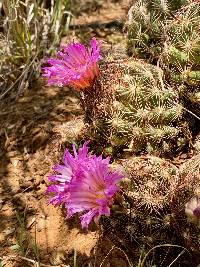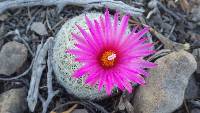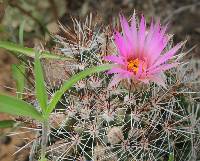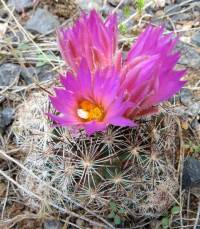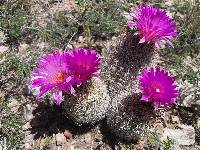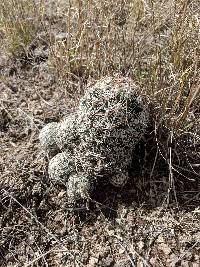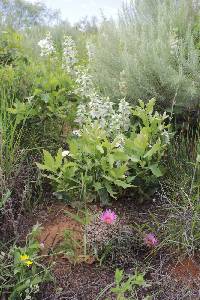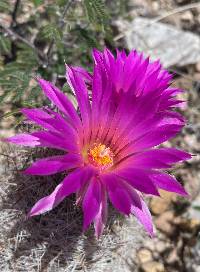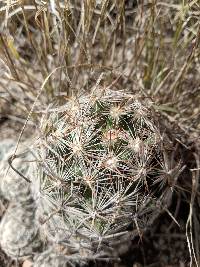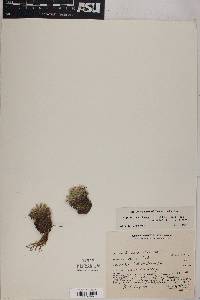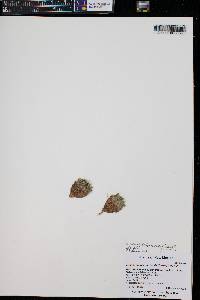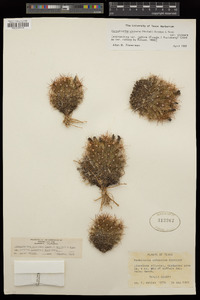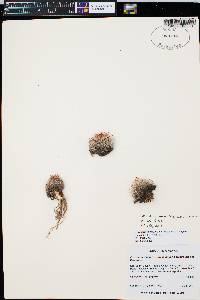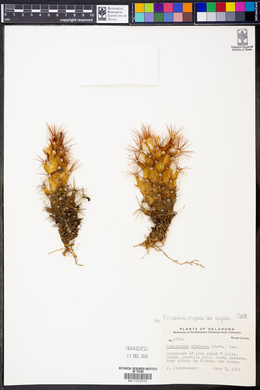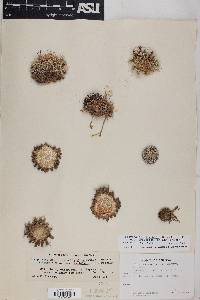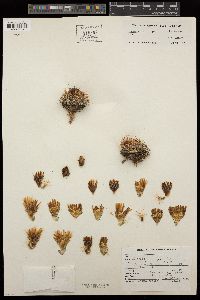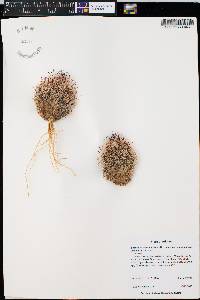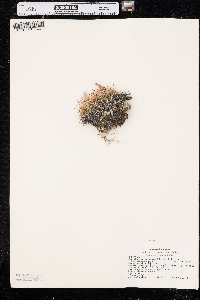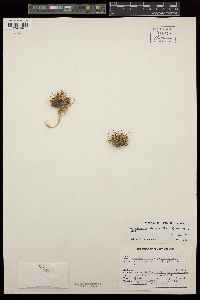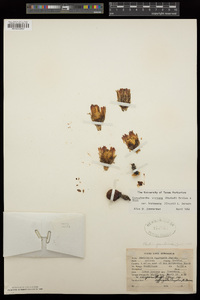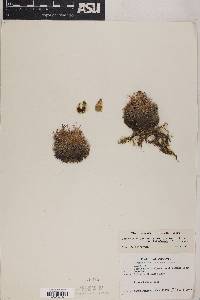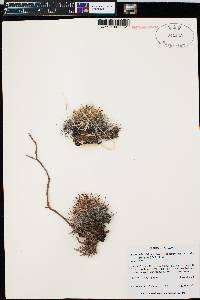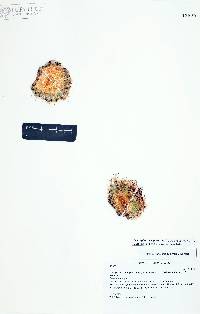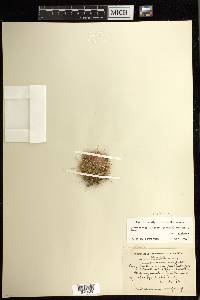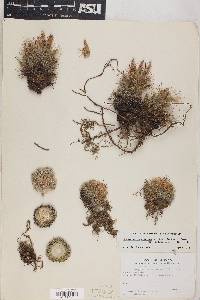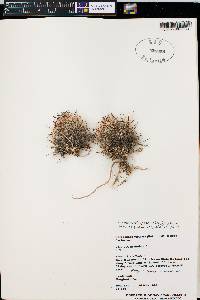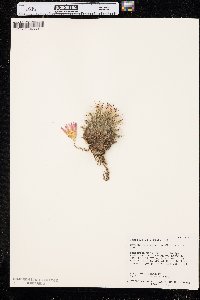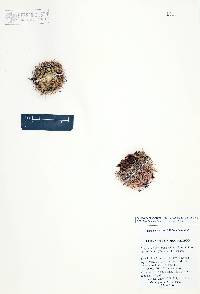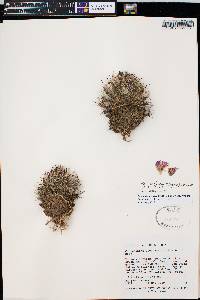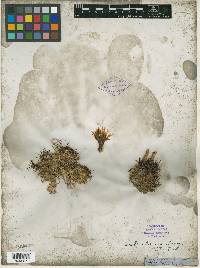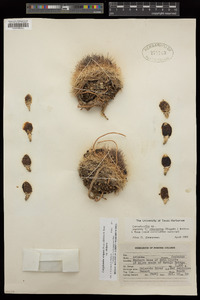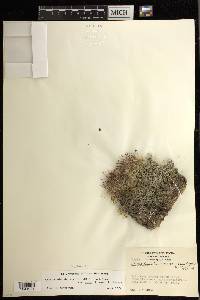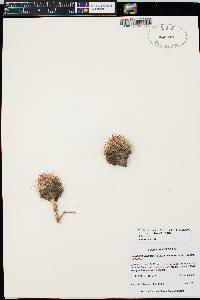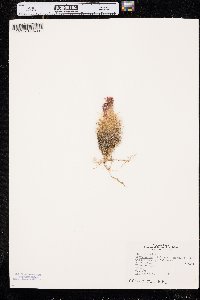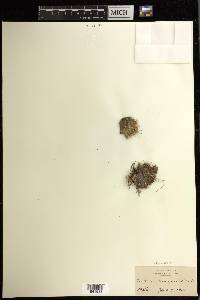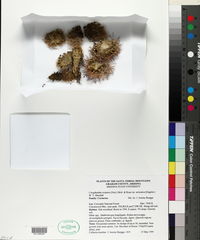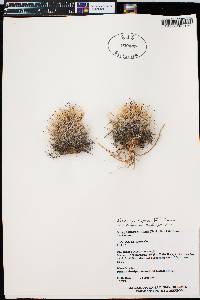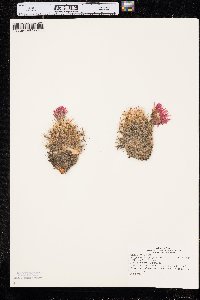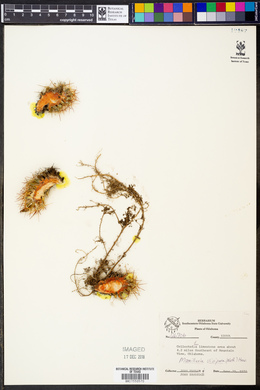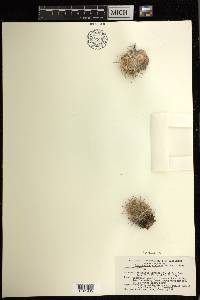Coryphantha vivipara var. vivipara
|
Coryphantha vivipara var. vivipara (Nutt.) Britton & Rose
 (redirected from: Escobaria vivipara var. bisbeeana (Orcutt) D.R. Hunt) (redirected from: Escobaria vivipara var. bisbeeana (Orcutt) D.R. Hunt) |
|
|
Family: Cactaceae
Spinystar, more...spinystar, spinystar, spinystar
[Coryphantha arizonica (Engelm.) Britt. & Rose, moreCoryphantha bisbeeana Orcutt, Coryphantha fragrans Hester, Coryphantha neomexicana (Engelm.) Britton & Rose, Coryphantha radiosa (Engelm.) Rydb., Coryphantha rosea Clokey, Coryphantha vivipara var. arizonica (Engelm.) W.T. Marsh., Coryphantha vivipara var. bisbeeana (Orcutt) L. Benson, Coryphantha vivipara var. kaibabensis P.C. Fischer, Coryphantha vivipara var. neomexicana (Engelm.) Backeb., Coryphantha vivipara var. radiosa (Engelm.) Backeb., Coryphantha vivipara var. rosea (Clokey) L. Benson, Escobaria vivipara (Nutt.) Buxbaum, Escobaria vivipara var. arizonica (Engelm.) D.R. Hunt, Escobaria vivipara var. bisbeeana (Orcutt) D.R. Hunt, Escobaria vivipara var. kaibabensis (P.C. Fischer) N.P. Taylor, Escobaria vivipara var. neomexicana (Engelm.) Buxbaum, Escobaria vivipara var. radiosa (Engelm.) D.R. Hunt, Escobaria vivipara var. rosea (Clokey) D.R. Hunt, Escobaria vivipara var. vivipara , Mammillaria arizonica Engelm., Mammillaria neomexicana (Engelm.) A. Nels., Mammillaria radiosa Engelm., Mammillaria vivipara (Nutt.) Haw., Mammillaria vivipara var. arizonica (Engelm.) L. Benson, Mammillaria vivipara var. borealis Engelm., Mammillaria vivipara var. neomexicana (Engelm.) Engelm., Mammillaria vivipara var. radiosa Engelm.] |
Benson 1969, Benson 1982 Common Name: Arizona spinystar Duration: Perennial Protected Status: Salvage restriced status in Arizona. General: Ovoid, solitary stems that form mounds up to 60 cm or more in diameter. The stems are stiff and erect, smooth in immature plants, to sparsely and coarsely needle covered in adult plants, the ovoid to cylindric stems are 5-10 cm long, 5-6.5 cm diameter, stems half above ground. Spines: There are 5-7 central spines, these red but white basally, 1.5-2 cm long, color may seem to mingle with the mass of radials, the radial spines number 20-30, are white and 1-1.5 cm long. Flowers: Flower 3.5-5 cm in diameter, the inner tepals deep pink, narrowly lanceolate and acute to mucronate, 2.5-3 cm long and 4.5 mm diameter Fruits: Green berry 12-25 mm, elliptic and becoming dry, sometimes with few scales. Ecology: Found on sandy and rocky soils in woodlands and forests from 4,500-7,500 ft (1372-2286 m). Notes: The reddish-brown central spines make the solitary, clumped, or mounded stems appear much darker than those of other varieties occurring from the mountains of western New Mexico outward. Prefers higher elevations than the other varieties, but is considered rare in many counties in Arizona. Ethnobotany: Unknown Etymology: Coryphantha is from the Greek koryphe, for summit or crown, and anthos for flower, referring to the way the flowers crown the stem, while vivipara means bearing bulblets. Arizonica means of or from Arizona. Synonyms: None, note that Tropicos does not separate out this taxa. Editor: LCrumbacher, 2010 Benson 1982 Common Name: Bisbee spinystar Duration: Perennial Protected Status: Salvage restriced status in Arizona. General: Clusters of ovoid blonde spiny balls, solitary or branching, often forming mounds that can be 60+ cm in diameter, the stems 2-7.5 cm long, 2-6 cm in diameter, tubercles 6-9 mm, grooved on upper surface from areole to base. Spines: Areoles with 3-6 central spines, these white to brown or gray with pink or brown tips, these 1-1.5 cm long, seeming to mingle with the mass of radials. The radial spines variable from 15-30, these white or brown, 9-25 mm long and straight. Flowers: Flowers bisexual, sessile, with straw yellow inner tepals, the outer tepals yellow-green, pink, magenta, to purplish, radial and narrowly lanceolate, 2.5-3 cm long and about 4.5 mm broad. Fruits: Green berry 12-25 mm, elliptic in outline, becoming dry, sometimes with a few scales, the perianth persistent. Ecology: Found on sandy to rocky soils, especially limestone, plains, hillsides, and grasslands from 3,000-5,500 ft (914-1676 m). Notes: Considered rare in many counties in Arizona. Differs from C. vivipara var. vivipara primarily by number of greater number of central spines. Ethnobotany: Unknown Etymology: Coryphantha is from the Greek koryphe, for summit or crown, and anthos for flower, referring to the way the flowers crown the stem, while vivipara means bearing plantlets or bulblets on the leaves or in the inflorescence of the parent plant, while bisbeeana refers to Bisbee, Arizona. Synonyms: None, note that Tropicos does not separate out this taxa. Editor: LCrumbacher, 2010 Benson 1982 Common Name: spinystar Duration: Perennial Protected Status: No status in Arizona. General: Stems solitary to numerous, forming mounds 30-60 cm in diameter, the stems depressed to cylindric, 2-5 cm long and 2-5 cm wide. The ribs inconspicuous with tubercles 6-9 mm, grooved on upper surface from areole to base. Spines: The spines dense with 3-12 central spines, the lower one turned downward, red and relatively dark-colored or basally white, 1-2 cm long and prominent among the radials, bearing 12-40 white radial spines, these 9-25 mm, slender, straight. Flowers: Bisexual, sessile and radial, 2.5-5 cm diameter, the tepals straw yellow, yellow-green, pink, magenta, to purplish. The inner tepals narrowly lanceolate-subulate, 1.5-2 cm long, 2 mm wide, with the other perianth parts ciliate, bearing many stamens. Fruits: Green berry 1-2 cm long, elliptic in outline, becoming dry, sometimes with a few scales and a persistent perianth. Ecology: Found in sandy to rocky soils, especially limestone, of grasslands and woodlands from 1,000-8,000 ft (305-2438 m). Notes: The lower central spine that turns downward helps to distinguished this variety. Ethnobotany: The fruit is eaten raw and boiled, and is useful in small amounts against diarrhea. Etymology: Coryphantha is from the Greek koryphe, for summit or crown, and anthos for flower, referring to the way the flowers crown the stem, while vivipara means bearing plantlets or bulblets on the leaves or in the inflorescence of the parent plant. Synonyms: None, conflicting information whether this is a segregate taxa. Editor: LCrumbacher, 2010 |
|
|
|
